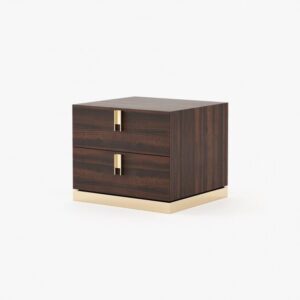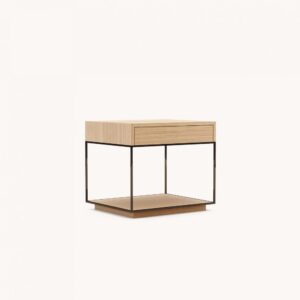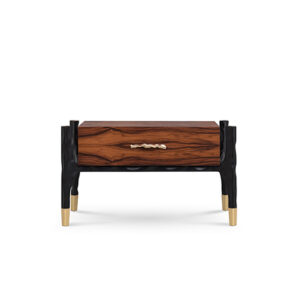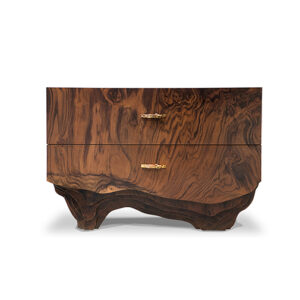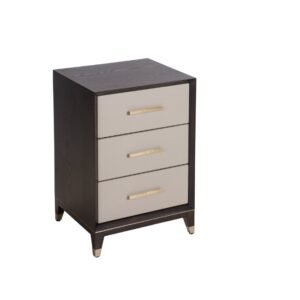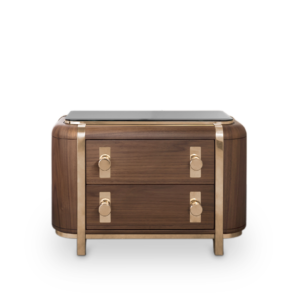Tips
NIGHTSTANDS VS. BEDSIDE TABLES: UNDERSTANDING THE DIFFERENCES AND CHOOSING THE RIGHT ONE
Unveil Luxury, Unleash Comfort – Eclectic Niche.
When it comes to creating a cosy and inviting bedroom, the little drawer by your bed can make all the difference in your nighttime routine. You have a choice between a bedside table or a nightstand. These unsung heroes of the bedroom serve more purposes than simply providing a place to rest your bedtime book. They can be the difference between a blissful night’s rest and a fumbled search for essentials, a reflection of your personal style, and even a source of much-needed storage space in a bedroom that might be otherwise lacking. As you furnish your bedroom, you may have noticed that the terms “bedside table” and “nightstand” are often used interchangeably. While these pieces of furniture may seem similar, some subtle distinctions can impact your overall bedroom design. Whether you call them bedside tables or nightstands In this guide, we’ll explore the differences between these little pieces of furniture, and how they play a big role in creating a comfortable and functional sleeping environment. We will help you select the perfect solution to elevate the style and function of your sleeping sanctuary.
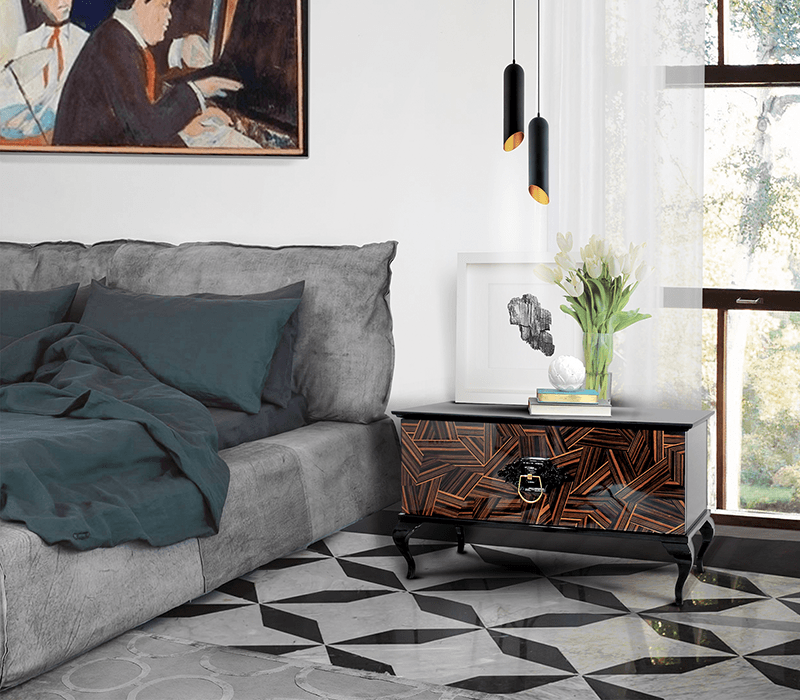
What are nightstands and bedside tables?
Bedside tables and nightstands are essential pieces of furniture in modern bedrooms, serving both functional and aesthetic purposes. Despite their frequent interchangeability in everyday language, there are subtle distinctions between the two, rooted in their design and historical development.
A bedside table typically refers to a small table placed beside a bed, primarily used for holding items that might be needed during the night, such as a lamp, alarm clock, book, or glass of water. Bedside tables often emphasize simplicity and surface space, sometimes featuring a drawer or shelf for minimal storage. On the other hand, a nightstand is generally characterized by more robust storage solutions, often including multiple drawers or a combination of drawers and shelves, designed to keep personal items close at hand and organized.
The terms “bedside table” and “nightstand” are used interchangeably due to their overlapping functions and similar positioning within the bedroom. Both pieces serve the practical need of providing a surface near the bed for convenience and easy access to essential items. However, the differentiation lies in the design emphasis: bedside tables lean towards providing a flat surface with some additional storage, while nightstands are more storage-centric, often bulkier and with a design that incorporates multiple storage compartments.
Historically, the evolution of these furniture pieces reflects changes in bedroom design and daily living practices. The concept of a bedside table can be traced back to the 17th century, where small tables were used to hold candles, writing materials, and personal items. As lighting and household utilities evolved, so did the design of these tables. By the 18th and 19th centuries, the bedside table began to incorporate drawers and cabinets, merging into what we now recognize as the nightstand. This evolution was driven by the increasing need for convenient storage space within arm’s reach of the bed, as well as the desire to keep personal items discreetly tucked away.
The term “nightstand” gained popularity in the 19th and 20th centuries, reflecting a shift towards more structured and storage-focused bedroom furniture. During this period, the design of nightstands became more standardized, often featuring two or three drawers and a sturdier build, distinguishing them from the simpler bedside table designs that persisted.
Despite these historical distinctions, modern furniture design has blurred the lines between bedside tables and nightstands. Contemporary designs often combine the surface simplicity of a bedside table with the storage capacity of a nightstand, leading to the interchangeable use of the terms. In current interior design practices, the choice between a bedside table and a nightstand often comes down to personal preference and the specific needs of the bedroom environment, rather than strict adherence to historical definitions.
-

Laskasas
Emily bedside table
£997 – £1,245 Select options This product has multiple variants. The options may be chosen on the product page -

Domkapa
Grazi Nightstand
£1,686 Add to cart -

Brabbu
LANKA BEDSIDE TABLE
£3,002 Add to cart
Comparative Bedside Tables and Nightstands
Nightstands and Bedside Tables can be differentiated based on on various factors, including:
- Design Features and Styles:
In terms of design features, bedside tables are generally more minimalist, offering a flat surface at a convenient height next to the bed, with space for essential items such as a lamp, a book, or an alarm clock. Some bedside tables might include a single drawer or an open shelf, but they often emphasize simplicity and accessibility. Their design focuses on providing a convenient surface with minimalistic storage, appealing to those who prefer a less cluttered look and do not require extensive storage space. Nightstands, on the other hand, are typically more robust in design, incorporating multiple storage options. A standard nightstand often features two or more drawers or a combination of drawers and shelves. This additional storage makes nightstands bulkier and more functional for individuals who need to keep various personal items close to the bed.

- Material:
The materials used in the construction of bedside tables and nightstands also reflect their design philosophies. Bedside tables are commonly made from lightweight materials such as MDF (medium-density fiberboard), laminate, or simpler woods like pine. These materials allow for a sleek and elegant appearance, often featuring clean lines and minimal ornamentation. Metal and glass are also popular choices, particularly in modern or minimalist designs, enhancing the airy and unobtrusive quality of bedside tables.
In contrast, nightstands are frequently constructed from more durable and substantial materials, such as hardwoods like oak, walnut, or cherry. These materials provide the strength needed for the added storage weight and give nightstands a more solid and enduring presence. The use of high-quality wood also allows for more intricate designs and finishes, such as carved details, inlays, or rich stains. Additionally, nightstands may incorporate metal hardware for drawer pulls and hinges, adding to their functional and aesthetic appeal.
Stylistically, bedside tables tend to lean towards modern, minimalist, and contemporary designs. Their simplicity allows them to blend seamlessly with various interior design themes, from Scandinavian to industrial, providing versatility.
Nightstands, however, are available in a broader range of styles, reflecting their more substantial and decorative nature. Traditional nightstands may boast ornate carvings, turned legs, and rich wood finishes, adding a touch of classic elegance to the bedroom. In transitional designs, nightstands combine elements of both traditional and contemporary styles, offering a balance of form and function. Modern nightstands might feature clean lines and innovative storage solutions, while rustic or farmhouse styles use distressed wood and vintage-inspired details to create a cozy, lived-in look.
- Storage and Surface Space :
Bedside tables typically have a surface-centric design, prioritizing surface space over storage. The surface space provides a modest amount of storage for items like reading glasses, remotes, alarm clocks, bedside lamps and others. Nightstands are inherently designed with storage in mind, hence the drawers and cabinets for a wide range of personal belongings.
4. Height and Dimensions:
The height of a bedside table ranges from 24 to 28 inches (61 to 71 centimeters), aligning closely with the standard height of most bed frames and mattresses. This height is chosen to ensure that items on the table are within easy reach when lying in bed. The width and depth usually ranges from 18 to 24 inches (46 to 61 centimeters) in both dimensions. This compact size allows bedside tables to fit comfortably in various bedroom layouts, including smaller spaces where a larger piece might be impractical.
Nightstands are often more substantial in both height and overall dimensions, reflecting their role as comprehensive storage units. The height of a nightstand typically ranges from 26 to 30 inches (66 to 76 centimeters), sometimes extending even higher. The width and depth of nightstands are generally broader than those of bedside tables, often measuring between 20 to 30 inches (51 to 76 centimeters) wide and 18 to 24 inches (46 to 61 centimeters) deep. These larger dimensions provide ample space for multiple drawers or a combination of drawers and shelves, catering to the need for greater storage in the bedroom.
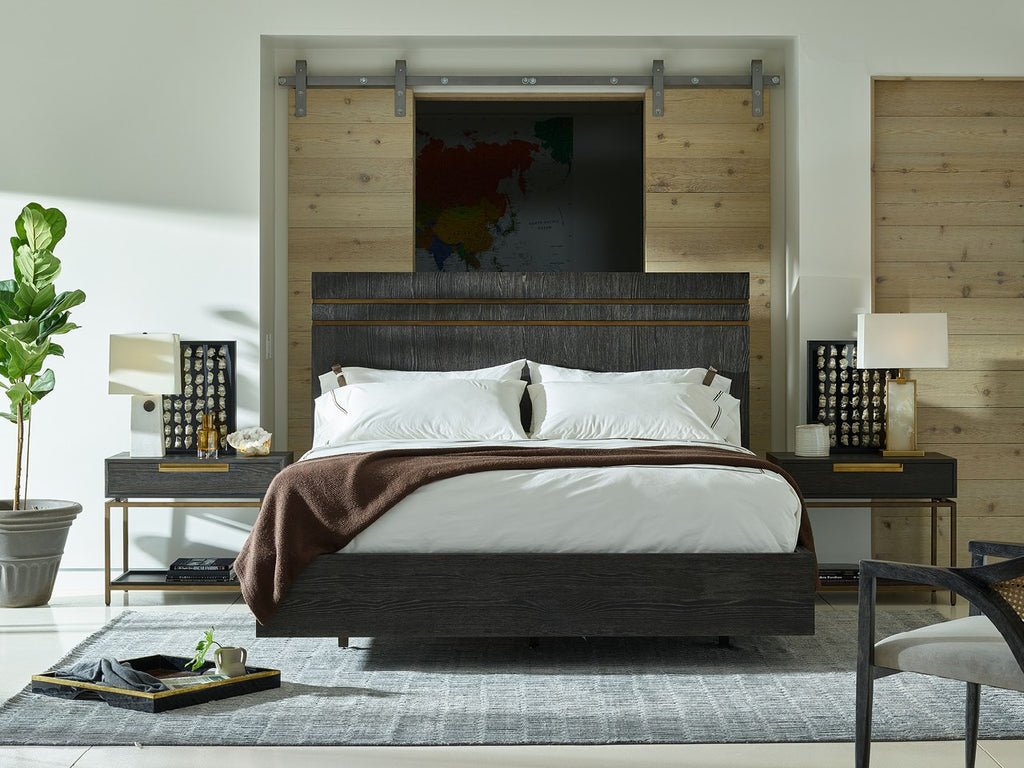
Choosing the Perfect Piece for Your Bedroom
Functionality
The primary purpose of both nightstands and bedside tables is to provide convenient storage and surface space next to your bed. However, their functionality can differ:
- Storage Needs: If you require ample storage space for personal items, a nightstand with drawers or cabinets is likely a better choice. This type of furniture can accommodate everything from books to electronics, keeping your bedroom organized and clutter-free.
- Minimalist Approach: For those who prefer a minimalist look or do not need much storage, a bedside table might suffice. A simple table can hold essential items like a lamp, a book, or a glass of water without overwhelming the space.
Design and Style
Choosing between a nightstand and a bedside table can also depend on your bedroom’s overall design and style:
- Traditional and Classic Designs: Nightstands often complement traditional and classic bedroom styles. They are usually made of wood and may feature ornate details, giving the room a timeless and elegant look.
- Modern and Minimalist Designs: Bedside tables are more versatile in terms of design. They can be found in various materials such as metal, glass, or minimalist wood designs, making them suitable for modern and contemporary bedrooms.
- Eclectic and Bohemian Styles: If your bedroom has an eclectic or bohemian vibe, mixing and matching different styles of bedside tables can create a unique and personalized look. Consider using a mix of vintage finds and modern pieces to add character to the room.
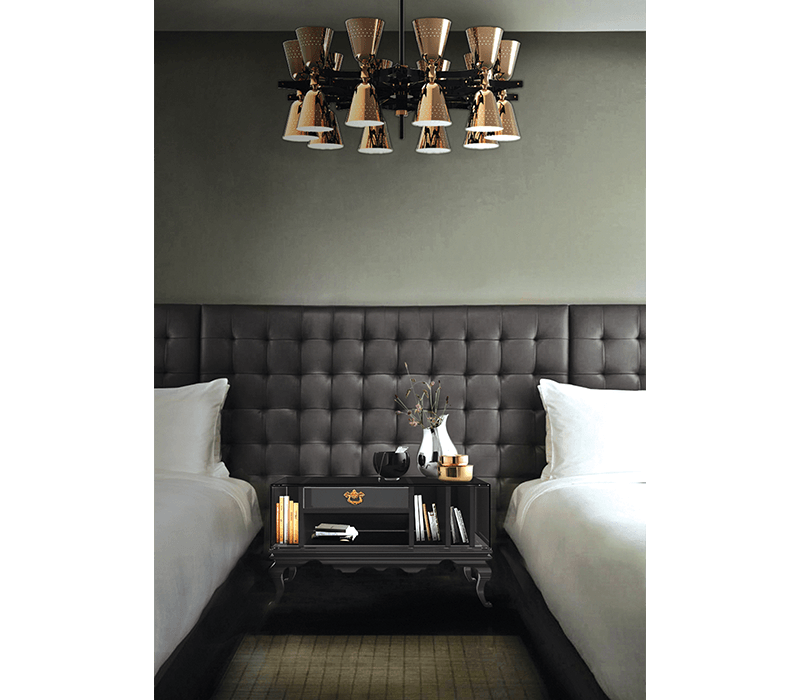
Size and Proportion
The size and proportion of your bedside furniture are crucial for maintaining balance in your bedroom:
- Proportion to Bed Size: Ensure that the nightstand or bedside table is proportionate to the size of your bed. For example, a large nightstand may overwhelm a small bed, while a tiny bedside table might look out of place next to a king-size bed.
- Height Considerations: The height of the nightstand or bedside table should be level with the top of your mattress or slightly higher. This makes it easier to reach for items when you’re in bed. Consider the height of your bed and the overall layout of your bedroom when selecting the right piece.
Additional Tips To Consider
- Assess Your Needs: Determine what items you need to store or keep within reach. If you have many items, a nightstand with ample storage might be necessary. If you only need space for a few essentials, a bedside table could be sufficient.
- Consider the Room Layout: Think about the layout and size of your bedroom. If space is limited, a smaller bedside table might be more appropriate. For larger bedrooms, a pair of nightstands can provide symmetry and additional storage.
- Match Your Style: Choose a piece that complements your bedroom’s style and decor. Whether you prefer a traditional, modern, or eclectic look, there’s a nightstand or bedside table to match.
- Think About Durability: Consider the materials and construction of the furniture. Solid wood nightstands tend to be more durable, while metal or glass bedside tables might require more careful maintenance.
While ‘nightstand’ and ‘bedside table’ are often used interchangeably, there are distinct differences. When choosing between the two, it’s important to consider different factors and select the best piece that enhances your bedroom and meets your needs.”

